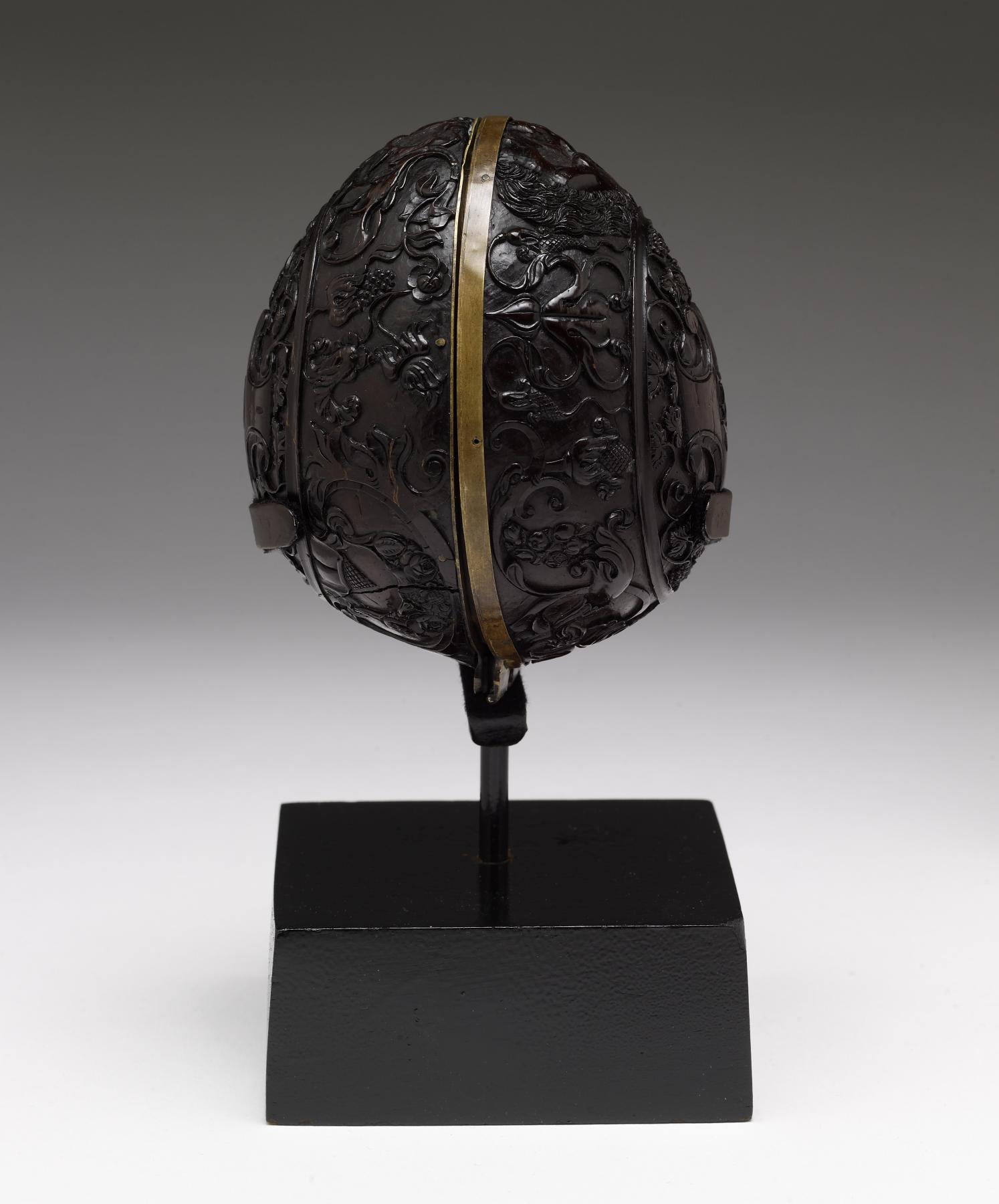Carved Coconut-shell Box
(Renaissance Europe )
Carved or decorated coconut shells were popular with collectors around 1600s because of their exotic associations. The intricately flowing but symmetrical pattern of oak, grape and other vine motifs is probably inspired by a late 16th century ornament engraving, as by Hans Collaert (Flemish 1525/30-1580) or Etienne Delaune (French 1518-1583) whose prints explicitly inspired other works in the Study. The monogram "IW" on a cartouche on either side is probably that of the unknown owner.
Inscription
Provenance
Provenance (from the French provenir, 'to come from/forth') is the chronology of the ownership, custody, or location of a historical object. Learn more about provenance at the Walters.
M. Léon Aymonier, Paris, 1949 [from the "Merci" Train]; Walters Art Museum, 1949, by gift.
Conservation
| Date | Description | Narrative |
|---|---|---|
| 6/15/1981 | Examination | examined for condition |
Geographies
France (Place of Origin)
Measurements
H: 4 15/16 × W: 3 15/16 × D: 4 5/16 in. (12.5 × 10 × 11 cm)
Credit Line
Gift of M. Léon Aymonier, France, 1949, as part of the "Merci" train, boxcars of presents from French citizens to their counterparts in each of the then forty-eight states.
Location in Museum
Accession Number
In libraries, galleries, museums, and archives, an accession number is a unique identifier assigned to each object in the collection.
In libraries, galleries, museums, and archives, an accession number is a unique identifier assigned to each object in the collection.
61.302










